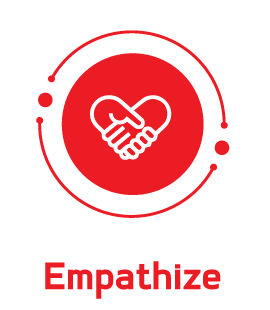STEPS
The racu process can be divided into five steps.
It is important to know that they don´t have to follow any specific order and can often occur in parallel and repeat iteratively.
So you should look at it as an overview of steps that contribute to an innovative process, rather than sequential steps.













